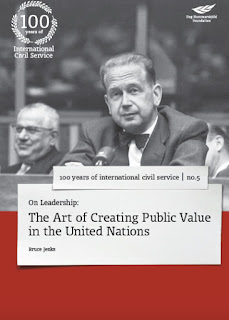The advent of judicialization beyond national borders marks a fundamental shift in international relations, leading some to argue that this shift is permanent. Some governments, however, have responded by mobilizing political resources and strategies to defend their interests.
“In addition, populist revolts against European integration and globalization more generally may have been exacerbated by the strength of the courts associated with the European Union (EU) and the World Trade Organization (WTO) and the international arbitral tribunals that hear investor-state disputes by foreign corporations,”
write KAREN J. ALTER, EMILIE M. HAFNER-BURTON and LAURENCE R. HELFER in the journal
International Studies Quarterly. “These politics may take a long time to fully play out, so that the ultimate impact of international adjudication may not be immediately apparent.”
For example, China’s entry into the WTO and its acceptance of the obligation to adjudicate trade disputes has had many downstream political effects, the authors write in their article titled ‘
Theorizing the Judicialization of International Relations’. The United States no longer uses the threat of withdrawing most favored nation market access because China disrespects the human rights of its citizens. The binding and legally enforceable nature of WTO trade rules has constrained responses to increased Chinese imports, contributing to the US and European strategy of negotiating new trade agreements outside of the WTO framework, to the invocation of national security as a justification for limiting imports, to the current US policy of blocking appointments to the WTO Appellate Body, and to a populist backlash against trade liberalization.
Most recently, the United States announced its withdrawal from a 144-year-old postal union treaty, because this treaty provides discounted small package shipping rates for Chinese goods sent to the United States. The WTO also creates a potential platform for China to take up the mantle of multilateralism that the Trump administration is shedding. “These events are not wholly determined by the judicialization processes we discuss. Yet, it is nonetheless the case that the legal rights and obligations associated with China's WTO membership – and the fact that these rights can be judicially enforced—have been a global political game changer.”
The overarching insights of the judicialization framework – that states do not fully determine the content, scope, or impact of delegation or adjudication and that legal process can diminish the role of executives and legislatures – has important implications for the study of international relations, ALTER, HAFNER-BURTON and HELFER state.
A key implication is that some of what the law actually does takes place in the shadows. “The mere threat of adjudication can prompt mobilization, bargains, and negotiations in ways that shape political decisions without any formal legal actions—a fact that has gone largely unnoticed by traditional international relations theory, which tends to focus on actual disputes and their settlements.”
Moreover, the adjudication process itself, once it has kicked in, brings a range of new actors that have not traditionally been the focus of international relations theorists. Alongside states and their well-studied branches of government are many other actors, such as judges and arbitrators, that interject themselves into what traditionally have been considered state matters.
Thus, for debates over compliance, looking simply to immediate state-driven outcomes may miss an essential element of law's influence. “Legal scholars have long understood that law is a process; interjecting this insight into the study of international politics can – and should – change the way we study what legal institutions actually do and how they help or hinder different actors and actions.”
Adjudication – and its very possibility – shapes legal discourse and state and international decision-making, the authors state. More broadly, the ‘practice of legality’ imparts a stability and a universality to international law that, at least in some circumstances, limits the extent to which the whims of executives are accepted within a single society or diffused around the world.
The constraints of this stability may be limited, as, for example, when President Trump follows prescribed legal steps to execute decisions to withdraw from international agreements or to levy tariffs, thereby avoiding litigation over alleged abuses of presidential authority. Yet, the ‘stickiness’ of legal processes may also mean that, in the long run, Trump will fail to change the international institutions or laws he dislikes, avoiding a major disruption of the existing multilateral order.
“We do not dispute that power undergirds laws and legal practices, such as those concerning the use of force and the pursuit of vital national interests,” the authors state. “But the interests of great powers cannot explain all externally oriented national and international behaviors.” It cannot explain why international laws do not maximally advantage hegemonic interests, why human rights advocacy has developed specific understandings of legal rights-claiming, why firms and bankers worry about and respond to legal regulations, or why national judges decide cases by applying settled principles of legal interpretation that ignore guidance from political actors.
This does not mean that state interests no longer matter; indeed, the more powerful a state is, the better it may be able to deflect legal processes or harness law as another tool in its arsenal. “But it does mean that state interests may be shaped, limited, and channeled by adjudicatory bodies and nonstate actors in ways not yet fully understood.”
Karen J Alter, Emilie M Hafner-Burton, Laurence R Helfer, Theorizing the Judicialization of International Relations,
International Studies Quarterly, Volume 63, Issue 3, September 2019, Pages 449–463,
https://doi.org/10.1093/isq/sqz019
























